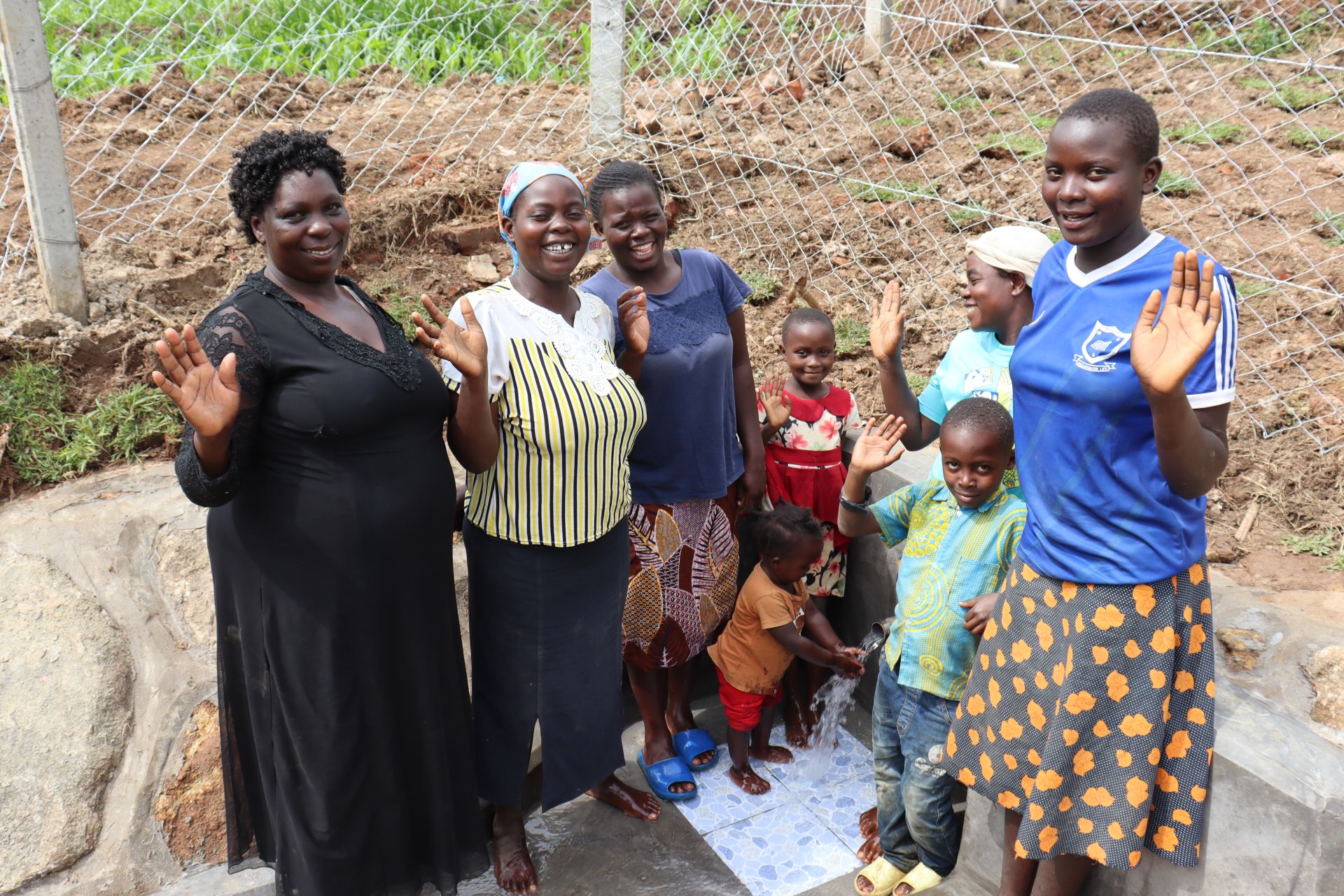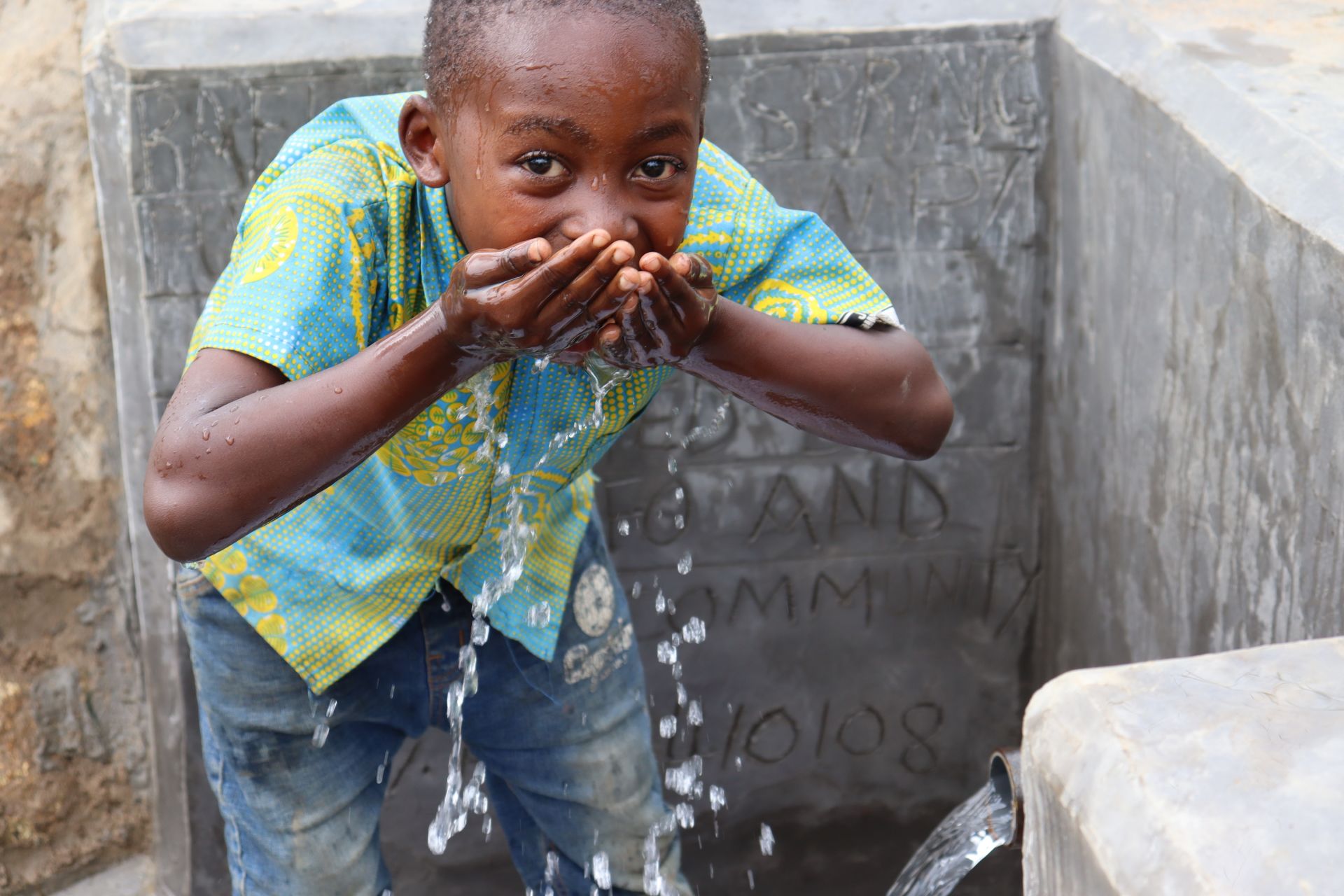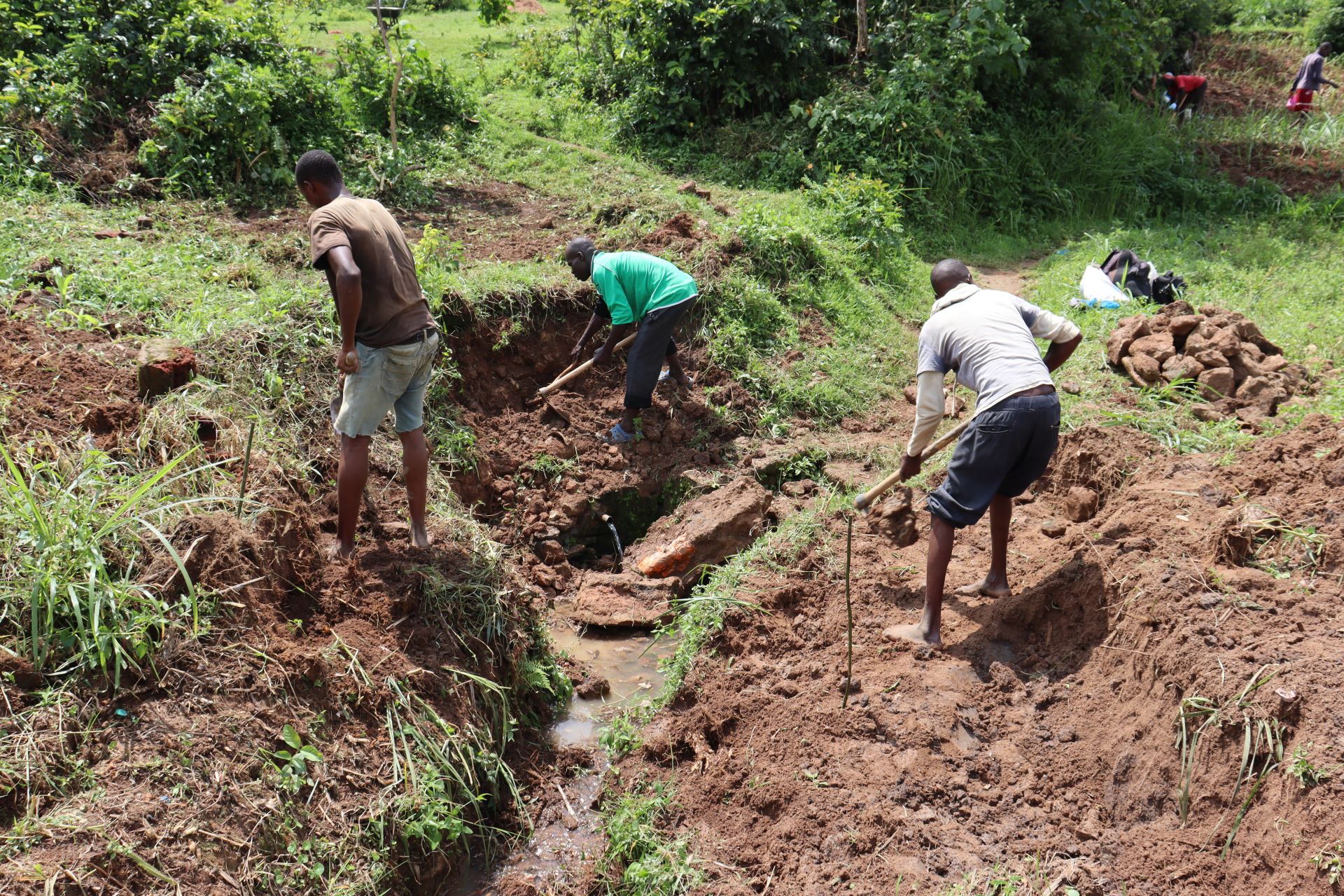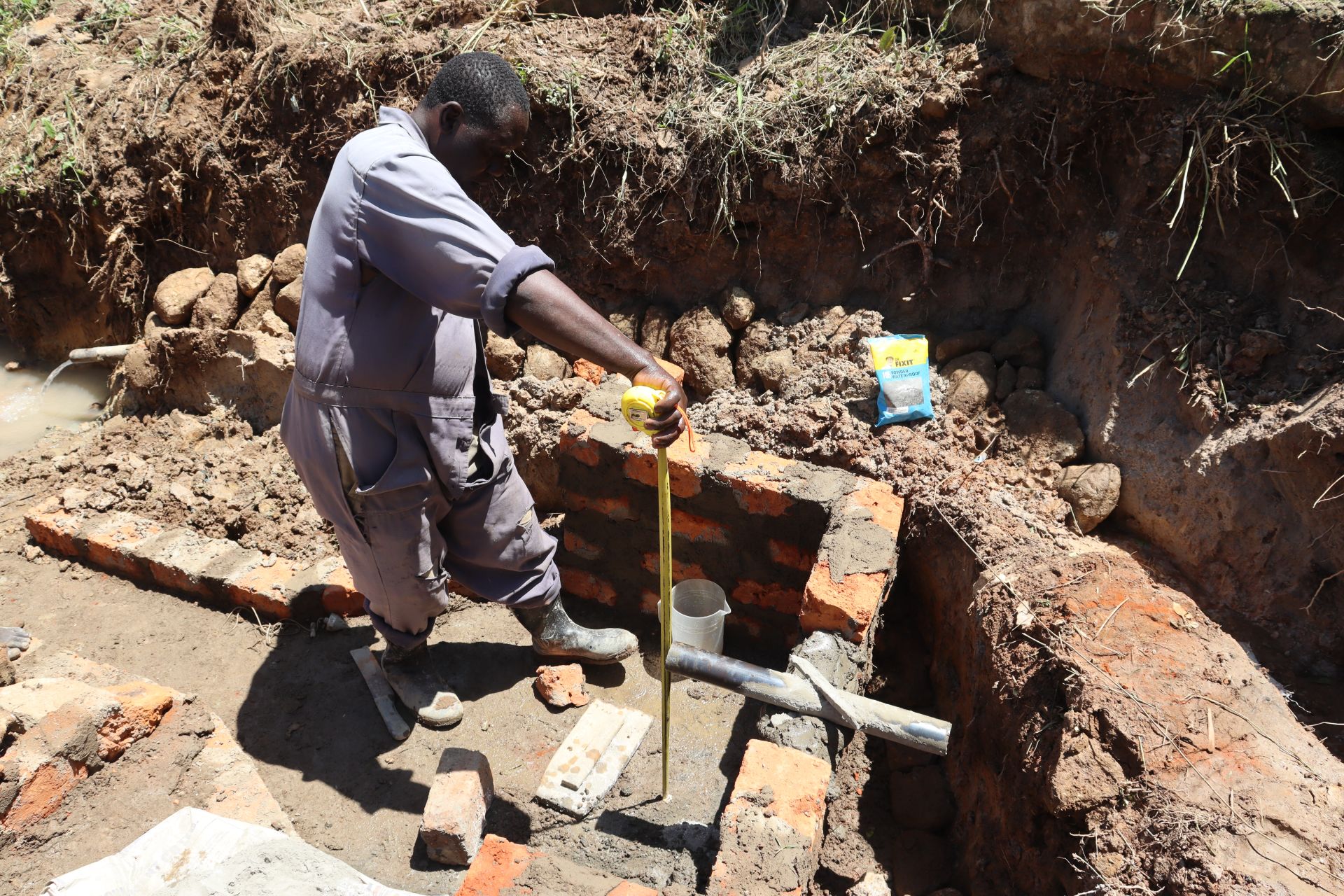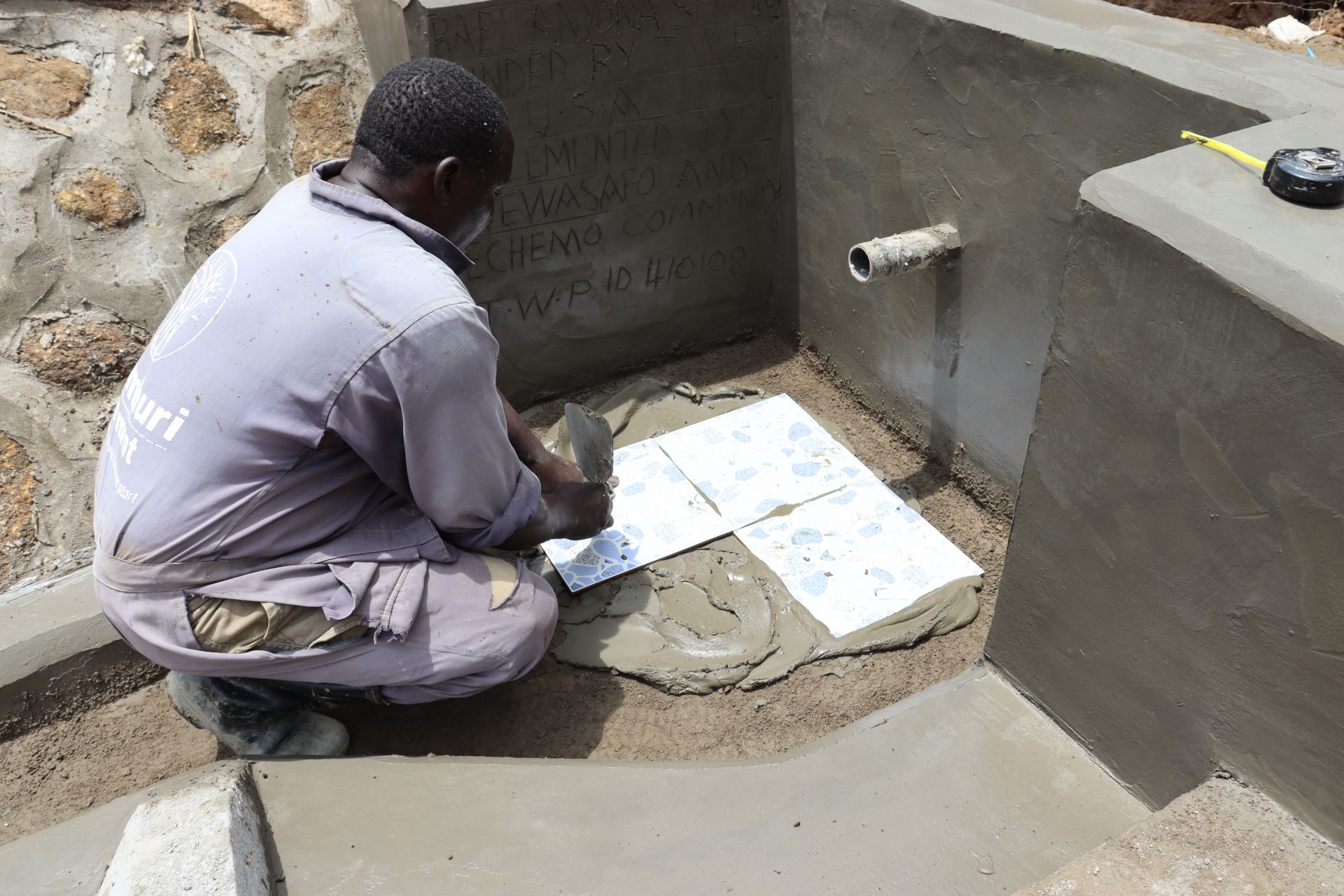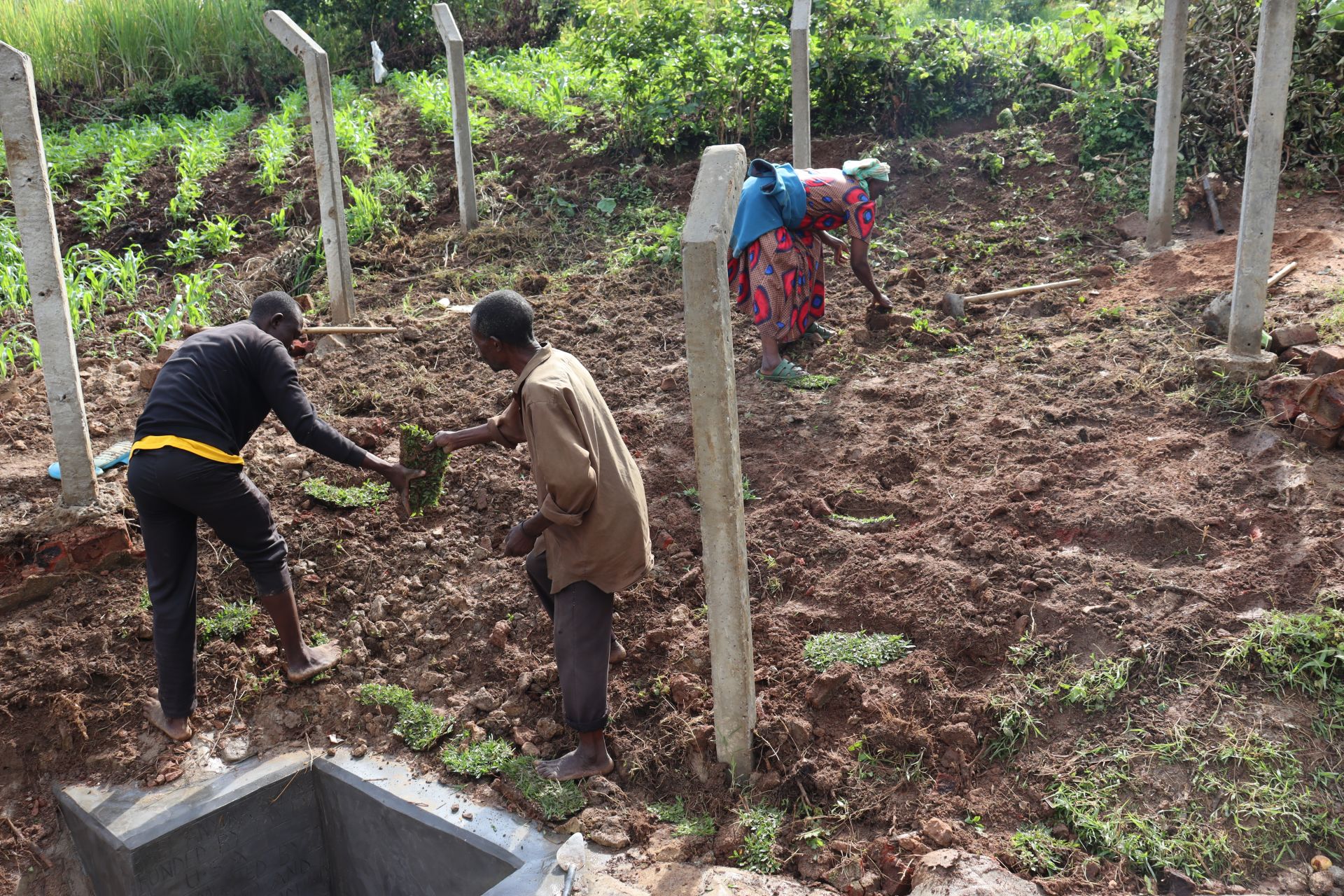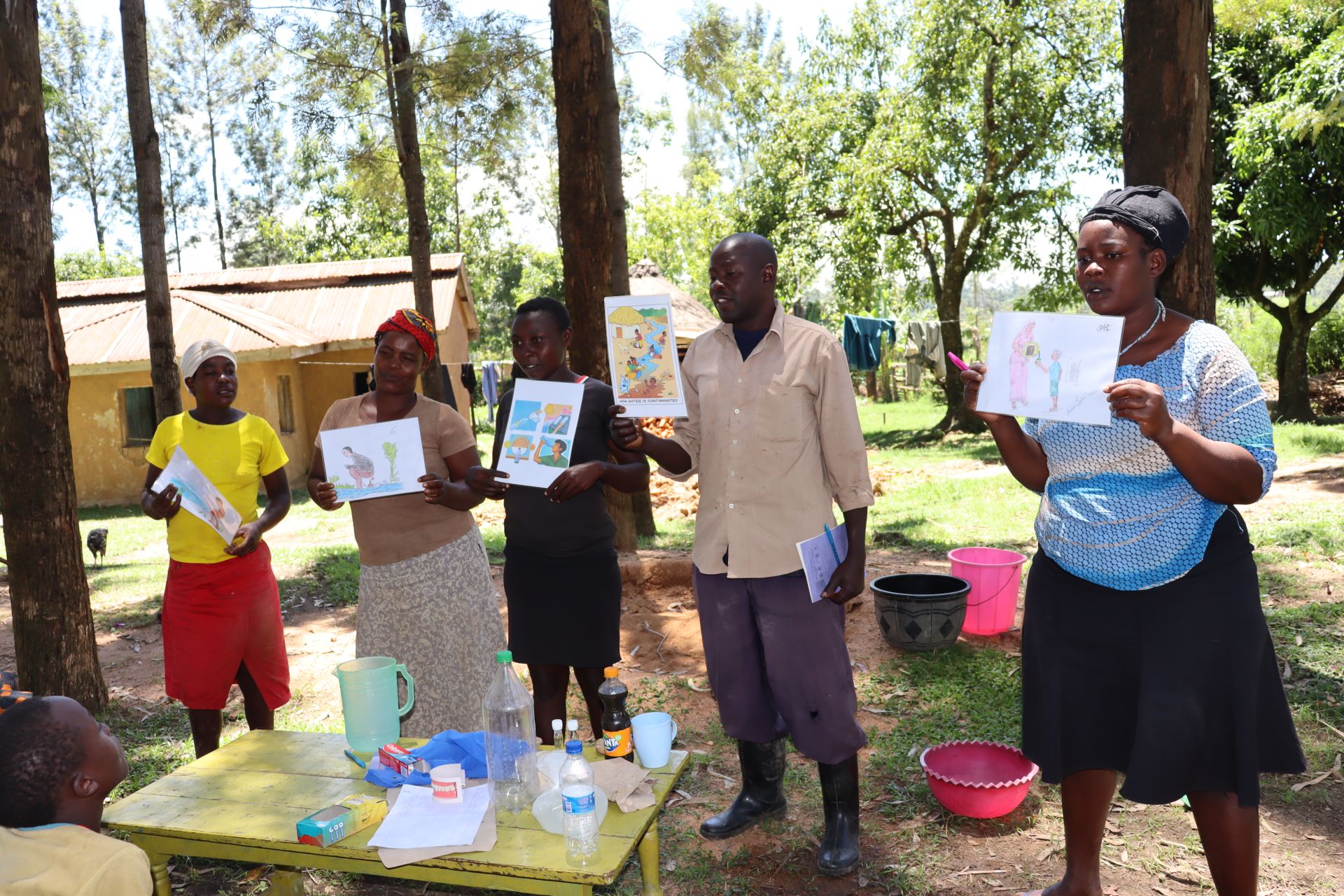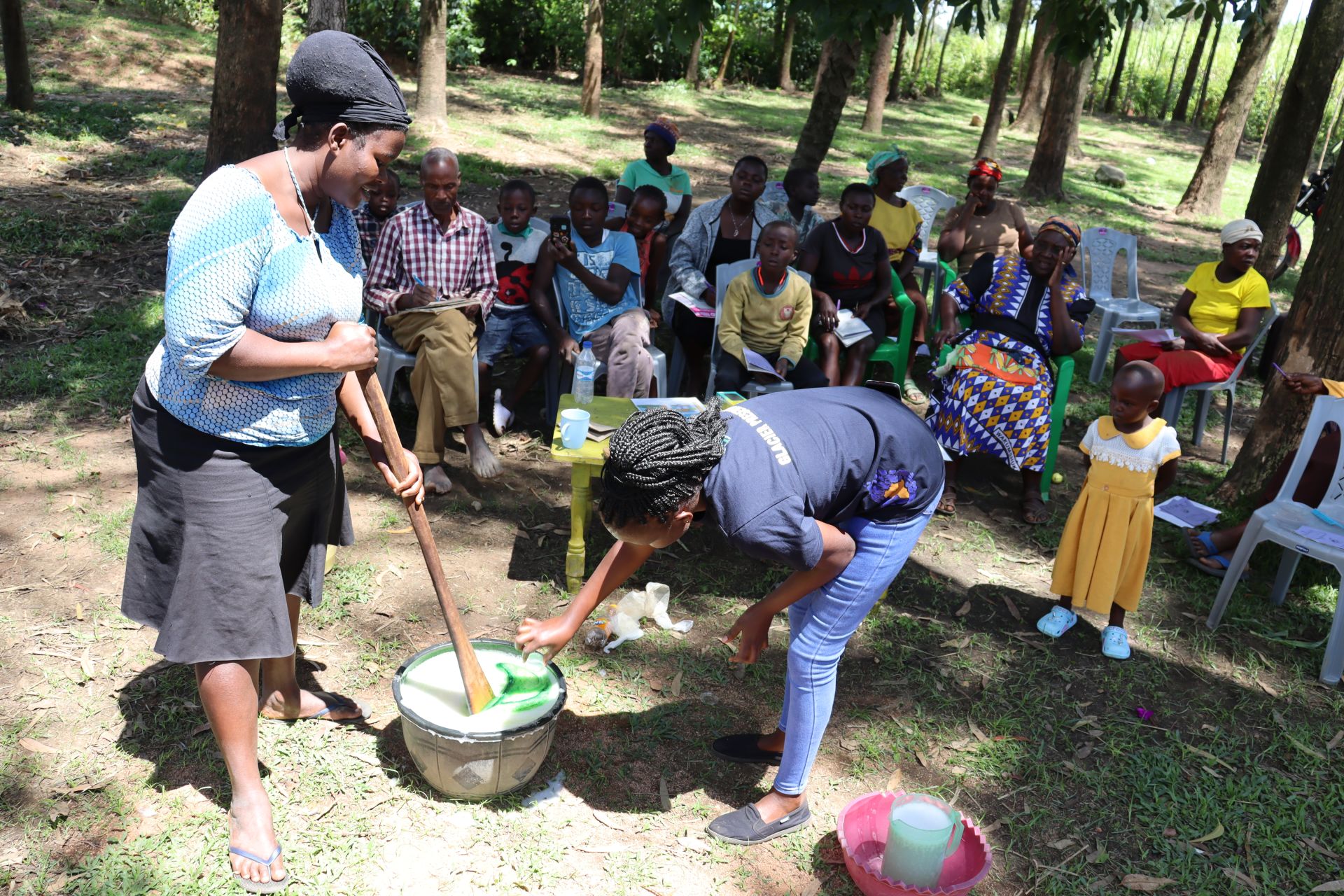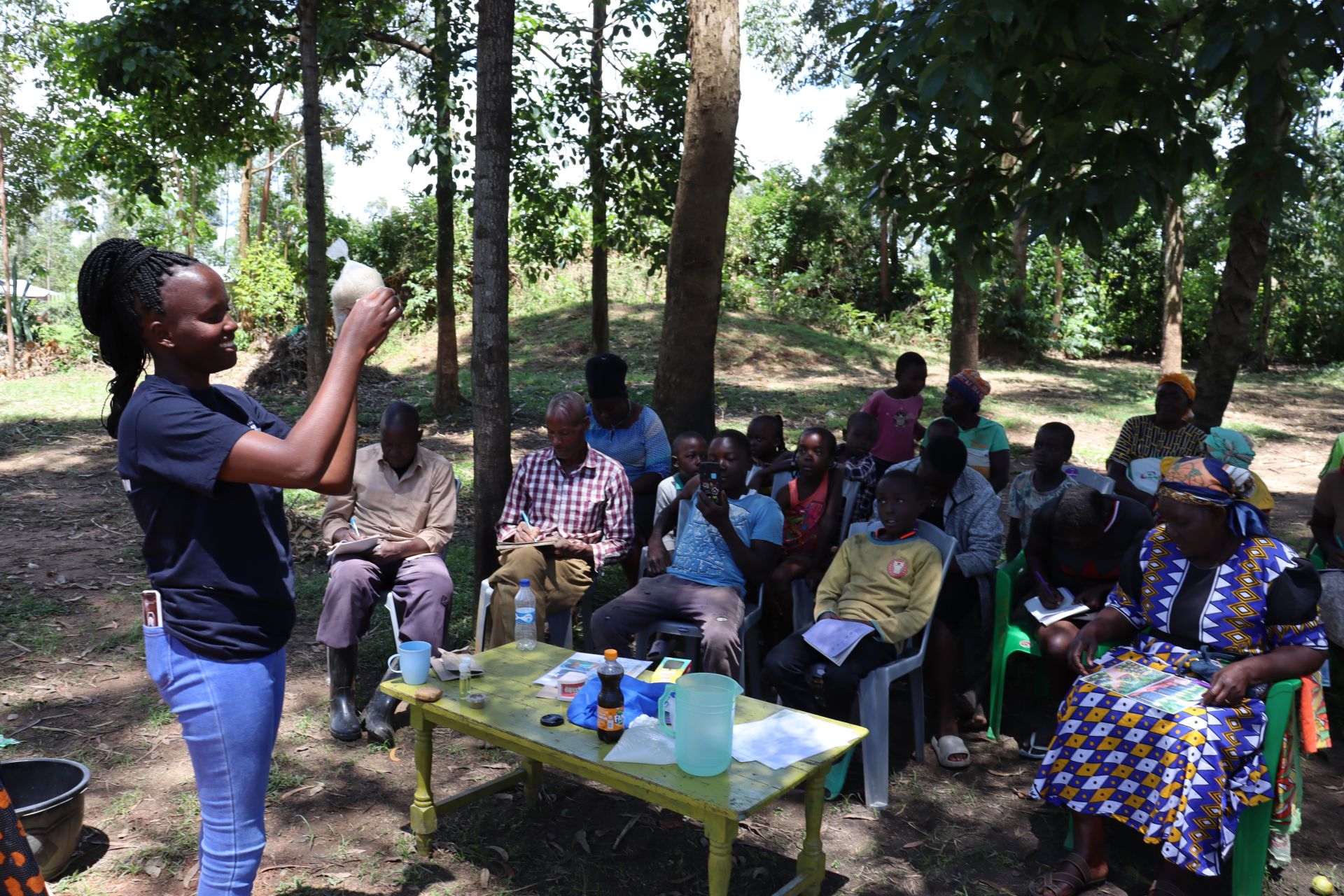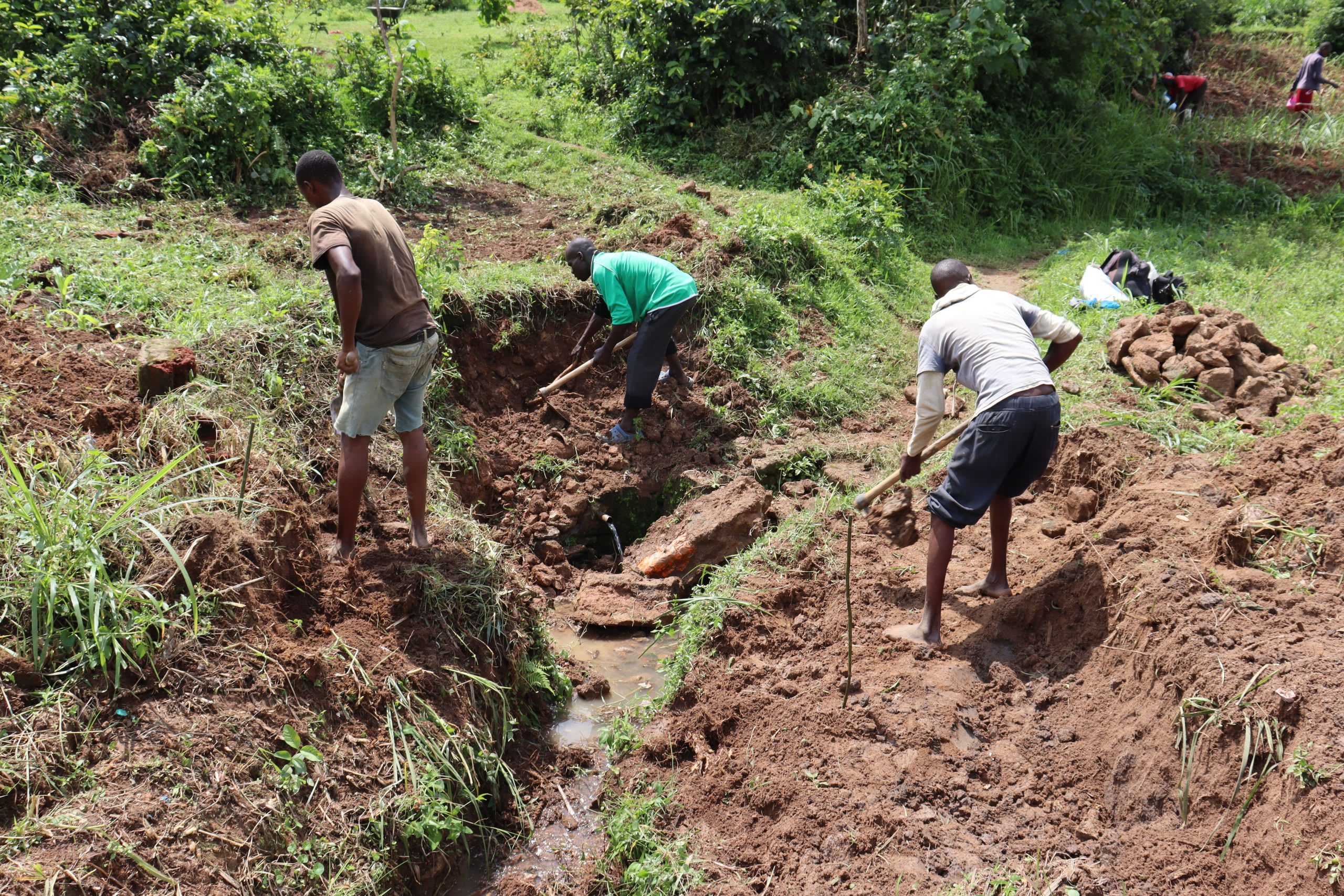A community spring is the primary water source for the 354 people who live in the Echemo Community. However, the structure is failing, and the water it produces is contaminated.
"The spring was not well protected based on [the] basics of spring protection. The spring discharge pipe is low and rusted. The headwall looks old, the floor has completely worn out, the stair is also damaged, and the area is bushy," Field Officer Amos Emisko shared.

Rael attempting to collect water from the spring.
"Water is life" is something we experience and see with our eyes. When the rains come, there is enough food because we go to [the] farm. Look at the vegetation along river banks and compare it with other places. You realize where there is water, there is plenty of opportunities. Water is very important to me because [I] am able to wash, [and] bathe, among other things," shared 58-year-old community member and farmer Rael Anyona.

The unprotected spring with crumbling walls and a flooded collection box.
"[I] am concerned about the structure itself in case it breaks down. We are not ready to go back to scooping water using a bowl," Rael expressed as she discussed the spring's current condition.

Rael.
Of course, water is vital to everyone's daily life, but so is the time to do the things that are vital for success and well-being. Sadly, another side effect of the spring's poor condition is its lack of efficiency. The discharge pipe is too low, which causes collection to take much longer than it should. This leads to overcrowding in the spring and causes tensions to rise among community members as people strive to be first, leading to frustration and arguments, disrupting unity.

People wait to collect water from the spring.
"During [the] drought season, the spring experiences long queues due to many people from different places who converge here to get water. The distance from here to the spring is less than 5 minutes, but during those days, I have to take up to 30 minutes round trip," said Rael.
"I have [heard] cases of harassment, but I have not experienced it myself. Being the closest person to the spring and owner of the land, some children have reported some form of harassment from their seniors. Teenagers love crowding and causing disorder, which makes the younger ones feel intimidated," Rael continued.

Rael.
Rael hopes that protecting the spring will once again bring community unity and allow her and others the time to attend to their daily tasks, such as looking after their animals and farms, securing their livelihoods, and improving their daily lives.
"It will inspire many of us to live [a] quality life. The water we will access [will be] clean and safe. My family will consume clean water, cook food with safe water, and wash it using clear water," concluded Rael.
Steps Toward a Solution
Our technical experts worked with the local community to identify the most effective solution to their water crisis. They decided to safeguard the existing flowing spring.
Spring Protection
Springs are natural water sources that originate from deep underground. As water travels through various layers of the earth, it undergoes a natural filtration process, making it cleaner and safer to drink. To protect these spring sources from contamination, we construct a waterproof cement structure around layers of clay, stone, and soil. This design channels the spring water through a discharge pipe, facilitating easier, faster, and cleaner water collection.
Chlorine Dispenser
As an extra measure towards water quality safety, uniquely engineered chlorine dispensers are installed at all of our spring protection projects so community members can treat their water with pre-measured doses of chlorine. The chlorine treats any residual contamination and stays active for two to three days, ensuring water stays safe to use even when stored at home. Chlorine delivery and maintenance of the dispensers are part of our ongoing community support.
Community Education & Ownership
Hygiene and sanitation training are integral to our water projects. Training is tailored to each community's specific needs and includes key topics such as proper water handling, improved hygiene practices, disease transmission prevention, and care of the new water point. Safe water and improved hygiene habits foster a healthier future for everyone in the community. Encouraged and supported by the guidance of our team, a water user committee representative of the community's diverse members assumes responsibility for maintaining the water point, often gathering fees to ensure its upkeep.

 Protected Spring
Protected Spring
 Rehabilitation Project
Rehabilitation Project










